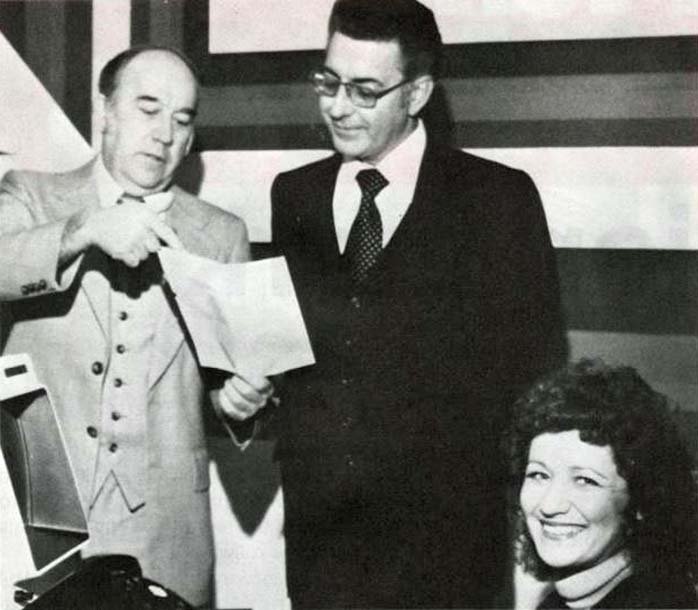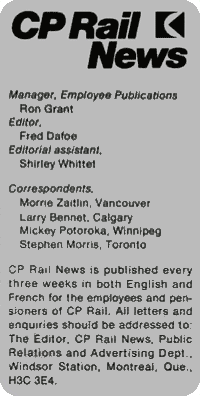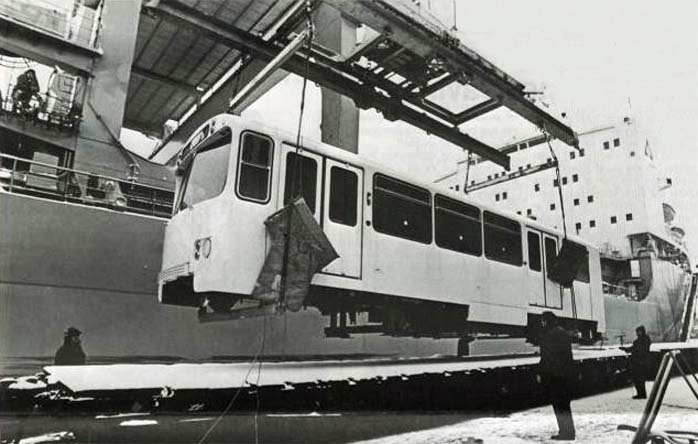
Number 3
February 27, 1980

MONTREAL - Almost two years to the day after kicking off a computerized waybilling system, the $1 billion mark has been reached, along with the millionth waybill.
The system, called Fastway, uses minimal information to prepare a waybill in seconds from details stored in a computer bank.
Fastway has reduced invoicing time by up to seven days for certain customers.
"The speed and efficiency of computerized waybilling has proved itself to be a major boon not only to the railway but also to its customers," said Ron Gnam, project manager, Fastway development. "The shipper who needs the freight charges before he can bill his own customer stands to benefit greatly from the speed and efficiency of Fastway."
More than 400 shippers are now participating in the system. Some 4,000 freight movements are waybilled and invoiced daily.
Fastway has replaced almost completely the former billing system for repetitive shipments that required a new waybill for each movement as if it had never happened before.
With Fastway, CP Rail analyzes the regular rail movements of its customers, identifies the repeating information in those movements, and uses it to prepare individual shipping patterns for shipments, which are stored in a computer at the railway's Montreal headquarters. Participating customers are asked to approve their prepared patterns.
When a customer has a shipment to make, he calls one of the 21 CP Rail Customer Services Centres (CSC) at key areas throughout the country, giving his pattern number, car number, and weight of the shipment.
The computer refers this information to the already stored pattern, determines the rate, calculates the freight charges, and sends the complete waybill to a printer located in the CSC. The shipper's car is then ready to move.
 Meanwhile, the
waybill information stored in the computer creates records for shipment tracing systems and is available for immediate updating of accounts
receivable. A copy of the waybill for train movement can be transmitted to any of the more than 100 terminals on the railway system.
Meanwhile, the
waybill information stored in the computer creates records for shipment tracing systems and is available for immediate updating of accounts
receivable. A copy of the waybill for train movement can be transmitted to any of the more than 100 terminals on the railway system.
"Fastway eliminates for the shipper the costly, time-consuming, task of having to prepare individual bills of lading for every repetitive shipment," said Mr. Gnam. "The advantages of this system have led some large corporations to change their accounting system to take advantage of Fastway."
Fastway began as a pilot project in the Ottawa area in September 1977, and was later gradually expanded to full implementation in all CSC's by October 1979. The millionth waybill was processed at the Winnipeg facility.
Computerized waybilling for shipments has become a railway trend in North America. In the United States, a central computer in Washington, D.C. is the exchange point of standardized waybill information for shipments of all participating roads.
Participating roads requiring waybill information on a shipment before it comes on line simply request the data from the central computer.
CP Rail expects to tap its Fastway system into the Washington exchange some time this year.


